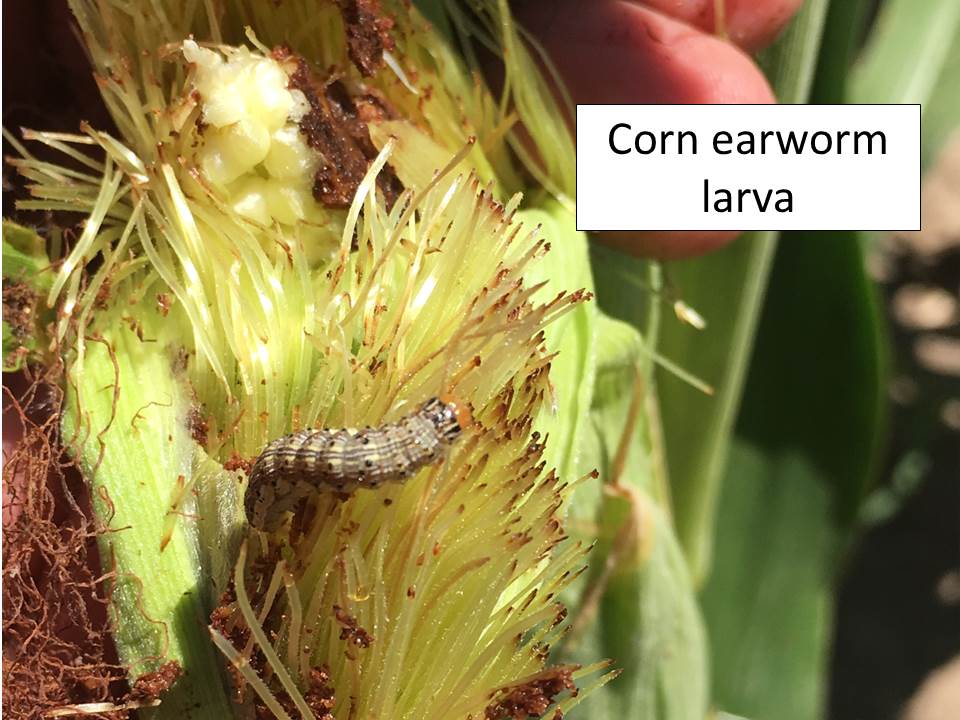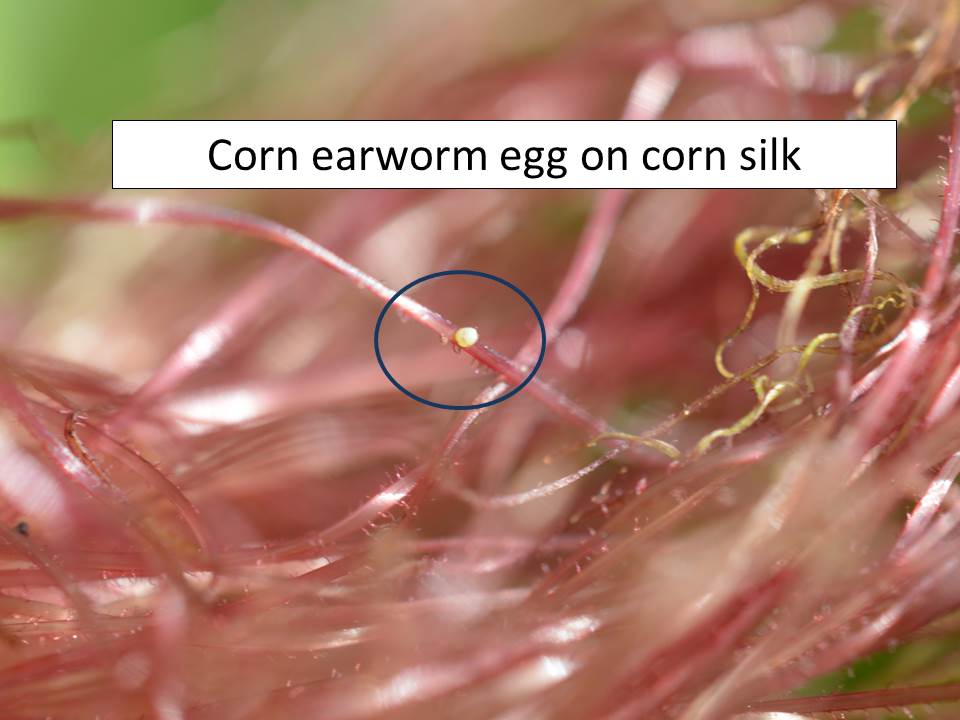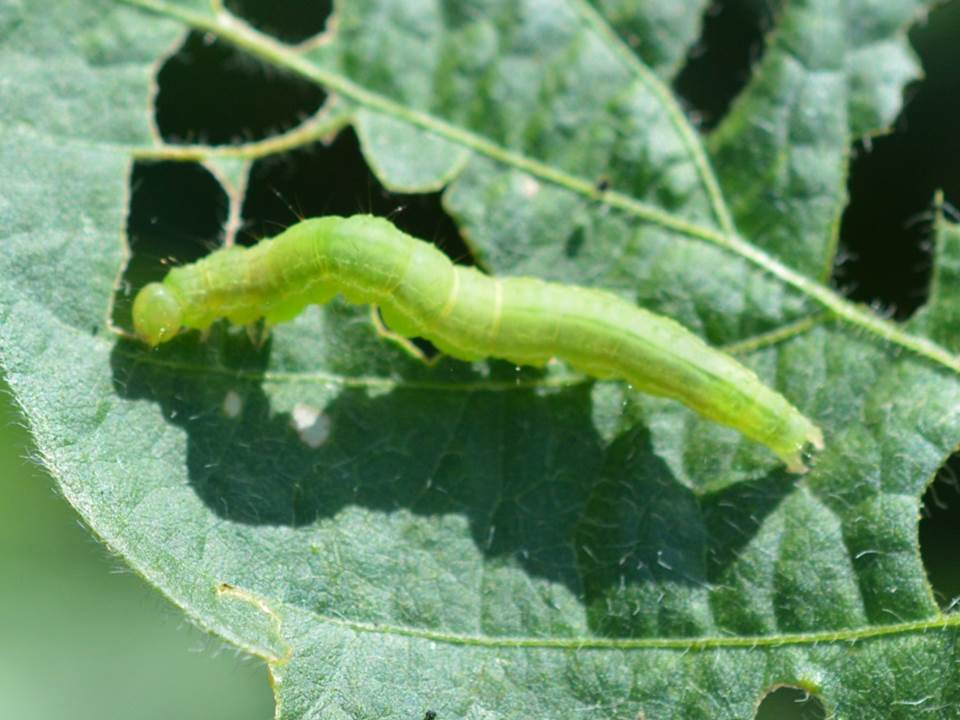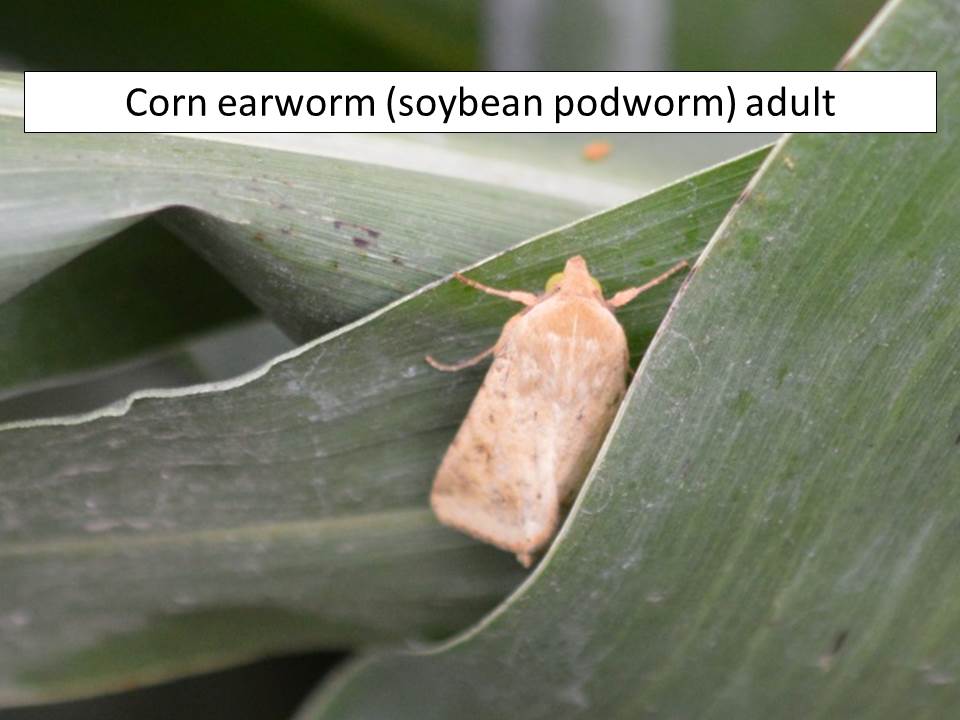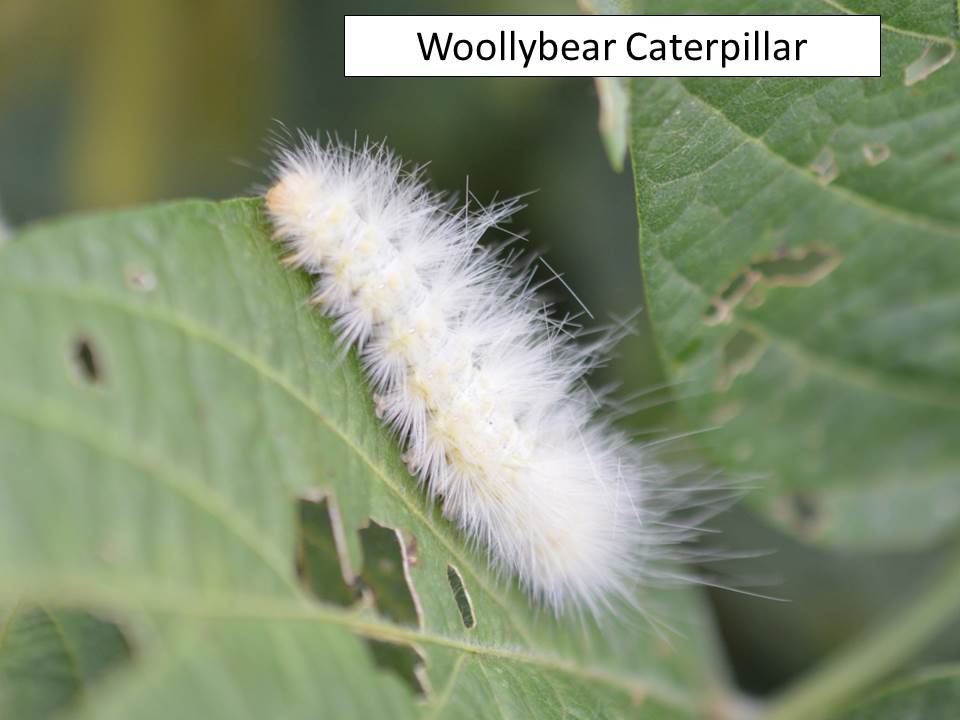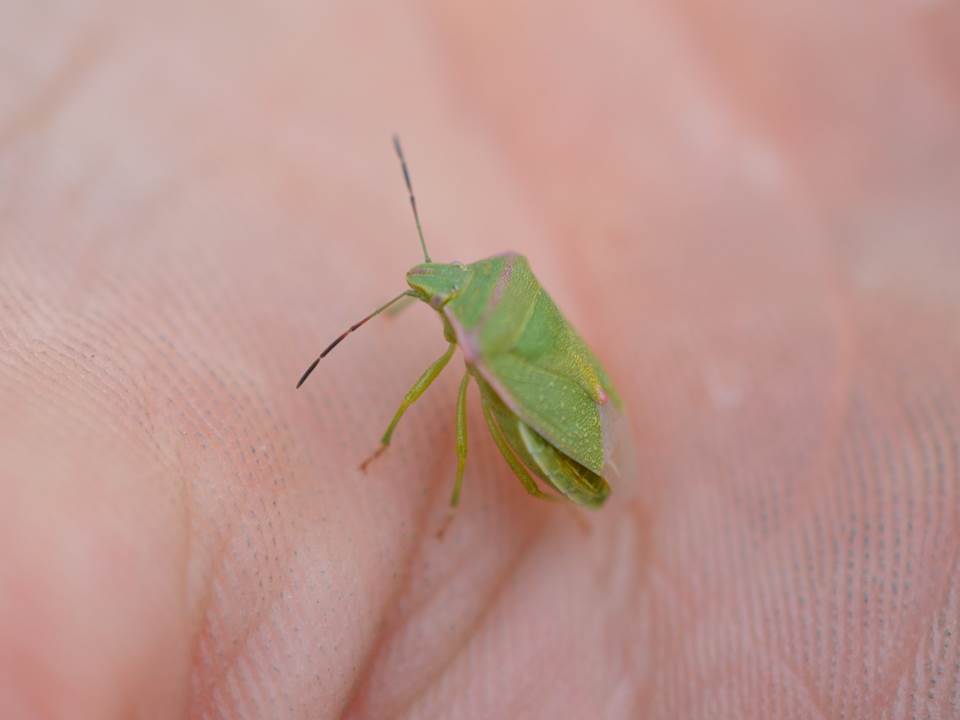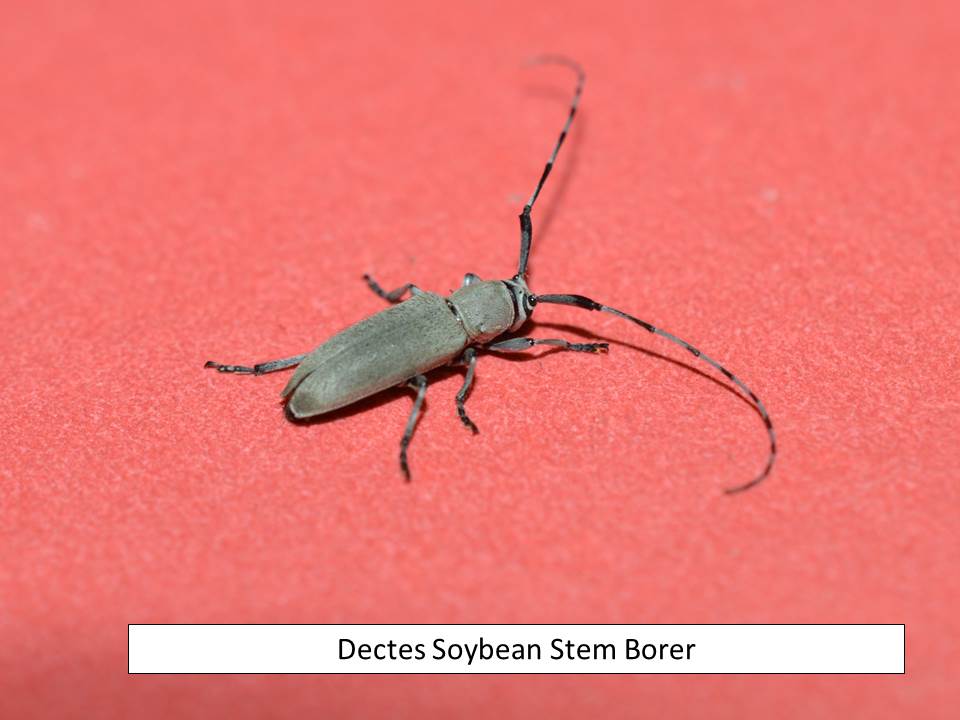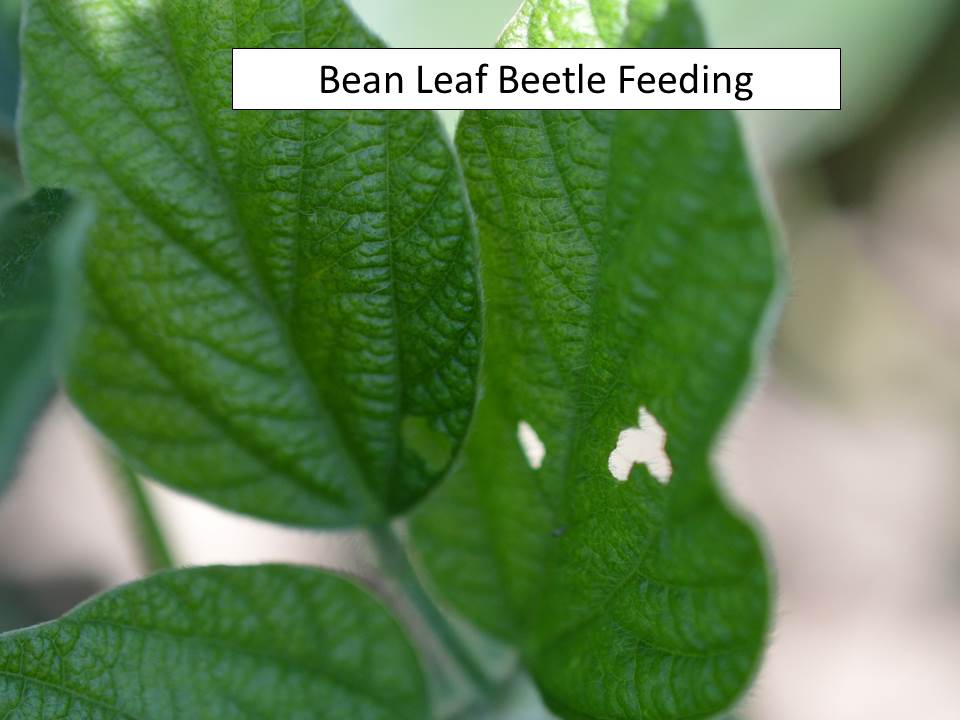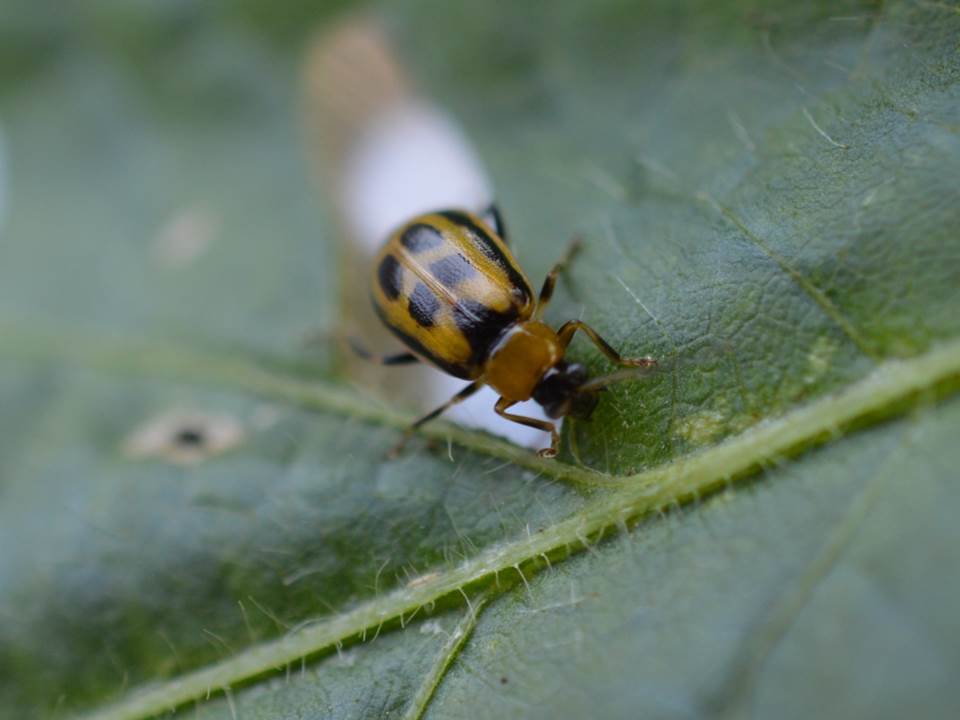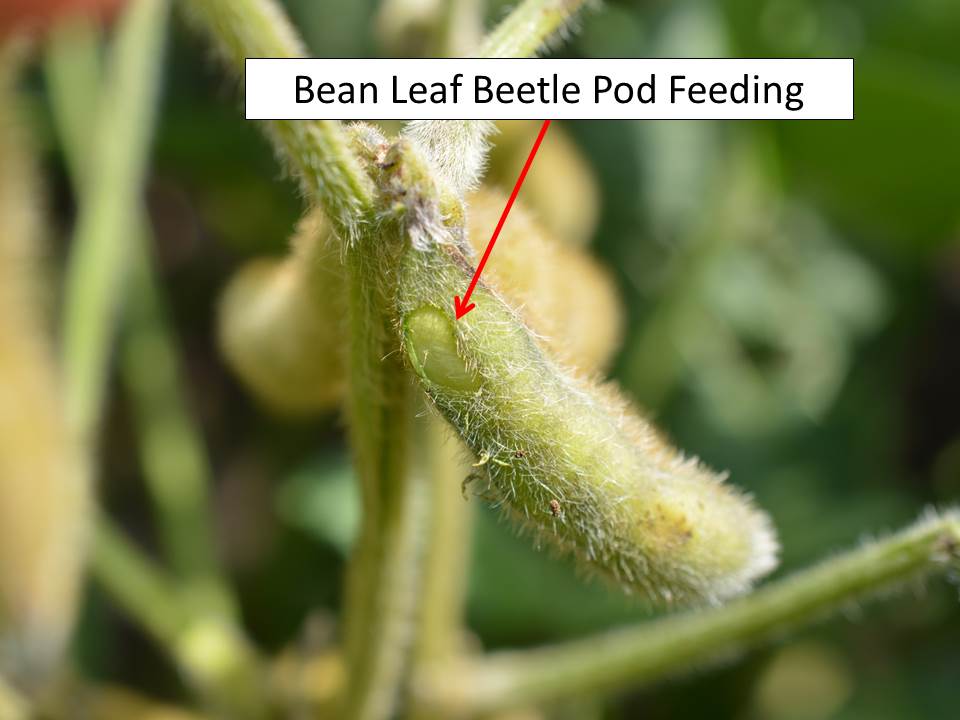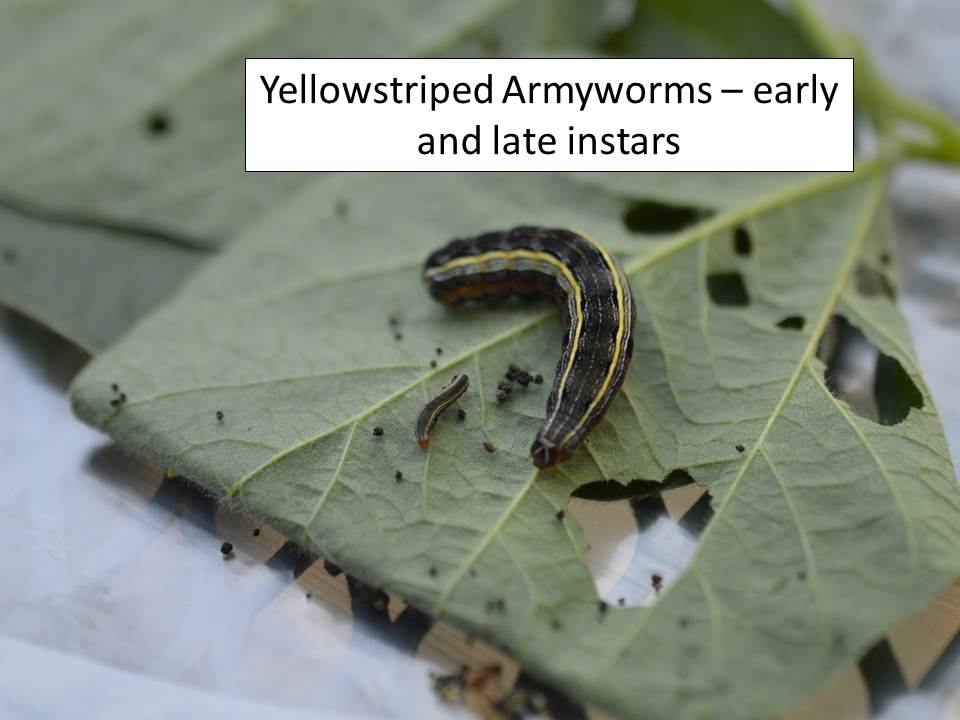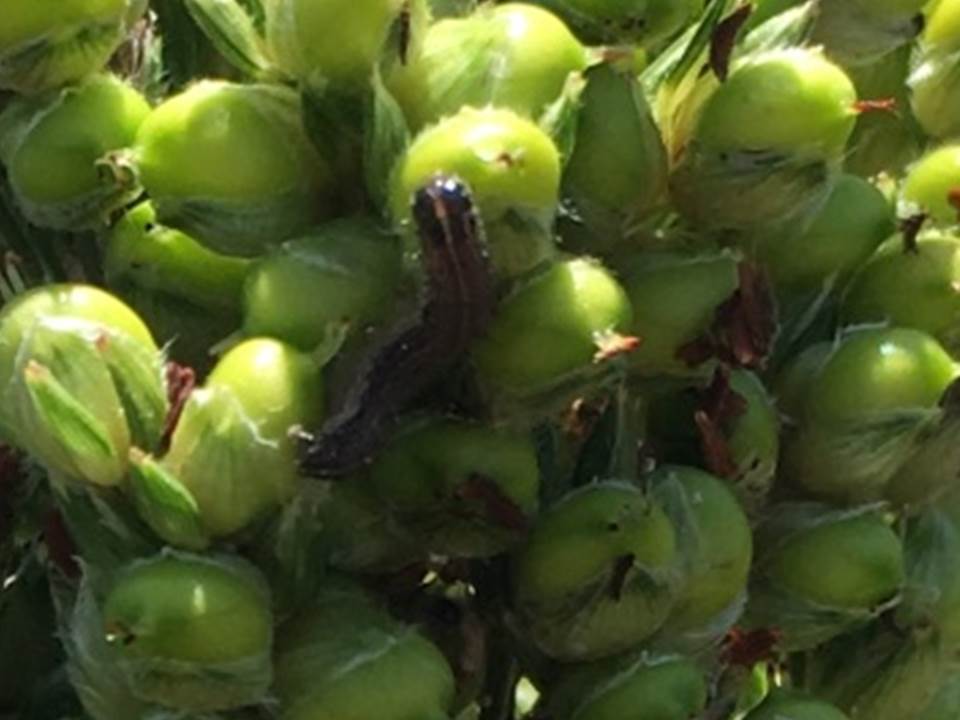–by Dr. Jeff Whitworth and Dr. Holly Schwarting
Have received several inquiries relative to corn earworms in field corn and there does seem to be a good infestation of them throughout north central Kansas. 100% of the ears we have randomly checked currently are, or have recently been, infested with corn earworm larvae.
Many of these larvae are still relatively small and thus will be feeding for another week or two. The two most common questions received this week relative to these pests are; 1) Will a rescue treatment work? The answer – no. Once the larvae have hatched from eggs deposited on the silks and moved into the husk, they will be protected from contact insecticides.
2) Will they re-infest these corn ears? The answer – no. Field corn will be too tough by the time these larvae finish feeding, pupate in the soil, emerge as adults, mate, oviposit, hatch, and larvae initiate feeding. But, the adults of this generation will move to soybeans (soybean podworms) and/or sorghum (sorghum headworms) to oviposit and larvae can do considerable damage by feeding on soybeans within the pods and/or directly on the kernels of the heads of sorghum plants. So, the larvae currently in corn are the “spring board” for the next generations moving into soybeans and sorghum.
